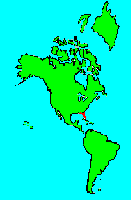SPECIES INFO
Arrowroot or alligator flag (Thalia geniculata) is found widely in the Florida peninsula and sporadically along the Gulf Coast to Louisiana. This is found in swamps and pond edges.
This large aquatic perennial can have flowering stems reaching to 9 feet in height. The leaf blades can be up to 20 inches in length and perhaps 10 inches wide. The small flowers are on wide spreading panicles and are purple in color with 3 petals and 3 smaller sepals.
This plant is considered "frequent" in Florida.The Thalia genus is found worldwide in tropical areas and also in warmer areas in North America. There are about 12 tall aquatic herbs in this genus. The blades are somewhat wide lanceolate with long petioles that sheath and generally overlap. The flowers are two ranked on a tall panicle.
Arrowroot Family (Marantaceae) is a generally a tropical family with about 350 species placed within about 30 different genera. There are eight species now considered established in greater North America, including Hawaii, Puerto Rico, and the Virgin Islands. Two members of the genus Thalia can be found in the southeastern United States. T. geniculata, a Caribbean species, is rather common along streams in south and central Florida, and as far north as South Carolina.
The family is primarily native to Central and tropical South America, Central Africa, India, SE Asia, and Indonesia. This family appears absent from Australia. These are terrestrial perennial herbs with sheathing leaves. The flowers are usually small.
Scitamineae Order contains the Banana, Ginger, Canna, and Arrowroot Tropical Families. The leaves are usually two ranked on the opposite side of the stem. The flowers are Zygomorpphic (Can be cut into two equal halves.)
Monocots are a large group of plants usually characterized by having leaves with parallel veins and a seed with a single shell. Most flowers are created with multiples of three. In the older botany texts, the Monocots were considered more primitive than the Dicots. However, many recent authors have placed the Monocots as an offshoot of the primitive Dicots. Here they are placed before the Dicots.
In l951 Lawrence at Cornell published a very detailed plant taxonomy for vascular plants. His taxonomy is very useful as he provided both a detailed explanation and also covered many genera. In the l990s Cronquist published a new plant taxonomy that improved the older taxonomy based on new knowledge. About the same time, Dahlgren published a different taxonomy.
Seed plants (Phylum Embryophyta) are generally grouped into one large phylum containing three major classes: the Gymnosperms, the Monocots, and the Dicots. (Some scientists separate the Gymnosperms into a separate phylum and refer to the remaining plants as flowering plants or Angiospermae.)
For North American counts of the number of species in each genus and family, the primary reference has been John T. Kartesz, author of A Synonymized Checklist of the Vascular Flora of the United States, Canada, and Greenland (1994). The geographical scope of his lists include, as part of greater North America, Hawaii, Alaska, Greenland, Puerto Rico, and the Virgin Islands.
Kartesz lists 21,757 species of vascular plants comprising the ferns, gymnosperms and flowering plants as being found in greater North America (including Alaska, Hawaii, Greenland, Puerto Rico and the Virgin Islands.
There are estimates within the scientific world that about half of the listed North American seed plants were originally native with the balance being comprised of Eurasian and tropical plants that have become established.
Plant kingdom contains a large variety of different organisms including mosses, ferns, and seed plants. Most plants manufacture their energy from sunlight and water. Identification of many species is difficult in that most individual plants have characteristics that have variables based on soil moisture, soil chemistry, and sunlight.
Because of the difficulty in learning and identifying different plant groups, specialists have emerged that study only a limited group of plants. These specialists revise the taxonomy and give us detailed descriptions and ranges of the various species. Their results are published in technical journals and written with highly specialized words that apply to a specific group.
On the other hand, there are the nature publishers. These people and companies undertake the challenging task of trying to provide easy to use pictures and descriptions to identify those species.

